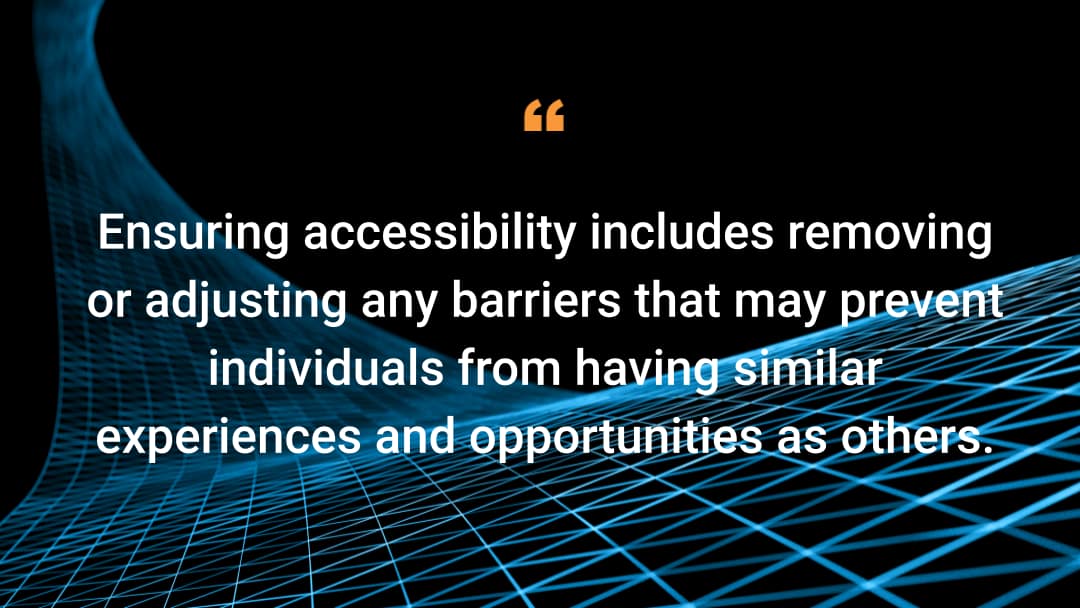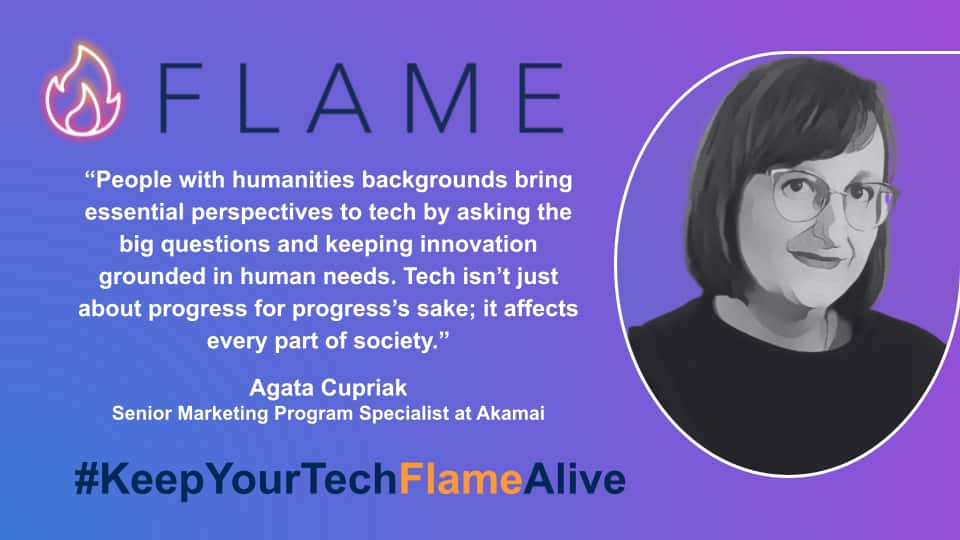Why It’s Important to Make Tech More Accessible

In this “Women in Tech” blog series post, Yuan Weigel, Vice President of Global Marketing at Akamai, discusses why it is important to increase accessibility in the tech industry as a way to improve diversity and increase the inclusion of women in tech.

Exposure boosts interest
Yuan Weigel, Akamai’s Vice President of Global Marketing,has had a successful career in the tech industry for more than 30 years. Yuan attributes her success to always having access to tech through her family of engineers.
“My family lived near the Silicon Valley area and members of my family were all in tech,” says Yuan. “My sister is an electrical engineer with 18 patents, my aunt was an IT software engineer for 35 years, and my uncle is also an engineer. They all had a science background.”
Be open to opportunities
Yuan’s early access to the industry normalized the idea of women working in tech, so she naturally gravitated toward the field while attending the University of California at Davis. Unfortunately, after graduating during a recession, the prospects for landing a job in any industry were slim. But thanks to a friend, Yuan was introduced to a software company that offered her an opportunity to follow in her family’s footsteps.
“It was sort of a bottom-of-the-totem-pole job, but I was just grateful for the opportunity. Of course, I grabbed it!” Yuan says — and she has been working in tech ever since.
Her subsequent journey to Akamai was also facilitated by a friend. “A previous manager brought me over [to Akamai]. She started to work at Akamai and asked me to join her. And that person was Kim Salem-Jackson.”
What would Kim do?
Meaningful connections in tech can lead to long-lasting collaborations and mentorships that provide emotional support for personal and professional growth. Yuan considers her relationship with Kim Salem-Jackson one of those meaningful connections that she has made while working in the tech industry.
“Often before I make a decision, I think, ‘What would Kim do?’ I learn from that woman every day,” says Yuan.
The benefits of mentorship beyond career growth
Yuan believes that a mentor relationship is not only important to career development, but also acts as a support system where both parties can share knowledge and provide a sounding board for new ideas, as well as help each other navigate through conflict resolution.
Yuan’s first manager also had a profound impact on her career path. Yuan worked for a vice president of engineering at that software company, and she credits him with shaping how she handles her responsibilities.
“He took his time to tell me what good performance looks like,” explains Yuan. He helped build her career by giving her opportunities that were not within her responsibilities to see whether she would be able to succeed without a lot of supervision. Yet, Yuan says, “He was always very supportive when I had questions.”
The mentee becomes the mentor
Mentors can help build professional reputation, increase marketability, and advocate for you to level up as you climb your career ladder.
“A lot of times mentorship is about helping [mentees] to think through a challenge.” As a mentor herself now, Yuan says, “I always try to suggest using empathy in communication, to understand where [everyone’s] coming from, and coach them through challenges.”

Facing new challenges every day
Yuan has been with Akamai for more than five years, and in her current role she is responsible for a plethora of tasks that “are not defined within a strict parameter” and acknowledges that she finds enjoyment in the challenges that her role presents.
“It has a lot of variety. I am never bored. There's always something happening in one of the five groups that I manage,” explains Yuan.
Part of Yuan’s responsibilities include demand generation for the enterprise security product line as well as carrier marketing. She is also responsible for industry strategy and engagement, marketing strategy and transformation, customer advocacy, and new approaches to go-to-market.
“In addition, I am responsible for global events that include virtual as well as in-person, internal, and external third-party events such as All Hands, Tech Week, security summits, world tours, RSA, and Black Hat.”
Being a part of a team of collaborators
The goal of Yuan’s team is to engage with customers and create content and engagement opportunities to use business challenges and imperatives to drive transformation. Her team is responsible for go-to-market strategy for Zero Trust, application and API security, and cloud computing services; mergers and acquisitions; process improvement; and large technical project implementation.
“To be on this team, by definition, you must be collaborative because every single member on the team must learn how to work with everybody across the organization,” says Yuan.

Earning respect as a woman in tech
Reflecting on her own journey in the tech industry, Yuan notes how tech has evolved and the number of women working in the field has increased over time. Although the industry continues to evolve, women still face challenges, such as having to work harder than their male counterparts, facing discrimination, or having to constantly prove themselves.
“When I started on the product side, there were not a lot of women,” she says, “and when you interact with people without [them] knowing your responsibility, they tend to assume you are the assistant — and ask you to fetch coffee or arrange furniture.
“I will give you a … real-world example: I went to a user conference. I was vice president already and a salesperson saw me …. He asked if I could get him a cup of coffee.
“We worked together. He knew my position in the company, but even then, it didn't matter that I was a VP. I was a woman. Sometimes, I think about my male counterparts, who run global marketing organizations, and wonder if that same person would ask [him] the same thing?”
Women are supposed to be in the room
To establish their position, it is essential for women to vocalize their opinions, showcase their value to the organization, and demonstrate their capabilities.
“Because of stereotypes, some may assume that the women in the room are not as technical. And that their function is more aligned to marketing or other administrative functions. [As a woman] you have to earn your place in whatever situation. You have to speak up, demonstrate your value in a meeting by sharing your opinion in your voice. And that's how you earn respect.”

The importance of making tech accessible to all
The rapidly evolving tech industry is recognizing the need to build a more diverse and inclusive workforce. One of the ways to do that is to make tech more accessible for those who traditionally did not have access to it. Ensuring accessibility includes removing or adjusting any barriers that may prevent individuals from having similar experiences and opportunities as others.
“Part of the reason why I'm in tech is because everybody else in my family is in tech, so it was never mysterious or inaccessible to me when I was in high school,” says Yuan. “We had a computer at our house because my aunt worked for a computer company, and she would have to dial to a mainframe from home in the middle of the night. That was not a mysterious piece of equipment to me; it was just something that I had access to, so, if we take some of that [mystery] away, I believe you will see tech more readily available to everybody.”
Bridging the digital divide
Not everyone has the same access to the benefits of technology, even though it is a ubiquitous part of our lives. Disparities in access to tech and the skills needed to use it can create a digital divide, which ultimately limits opportunities and promotes inequality.
A lack of diversity in the tech industry can perpetuate a digital divide and limit a range of perspectives and experiences that can potentially develop and deploy new technologies.

Accessibility changes perspectives
Prioritizing efforts to make tech accessible to all, regardless of age, race, gender, or socioeconomic status can empower communities, promote innovation, and drive progress in breaking down systemic barriers.
Yuan asks herself, “Is there a way that we can put together a curriculum that encourages girls, individuals that are minorities and those with special challenges [and] think of ways that tech can help within their own family?” She hopes it’s that relatability and engagement at a local level that will make people think, “Oh, this is accessible to me. It’s perfect.”




